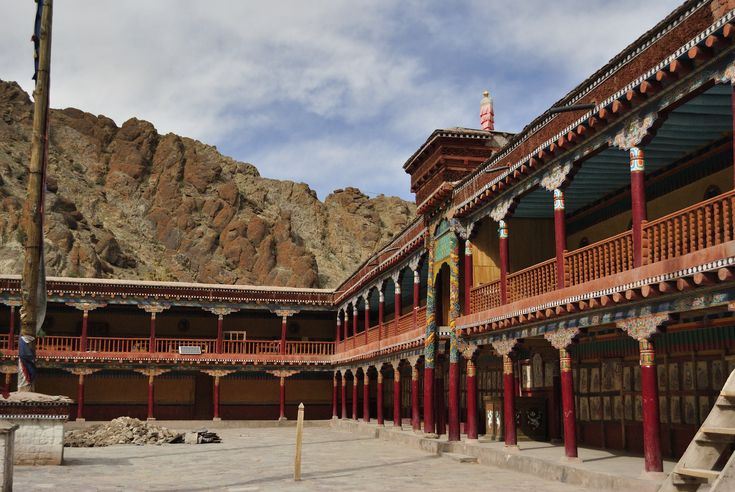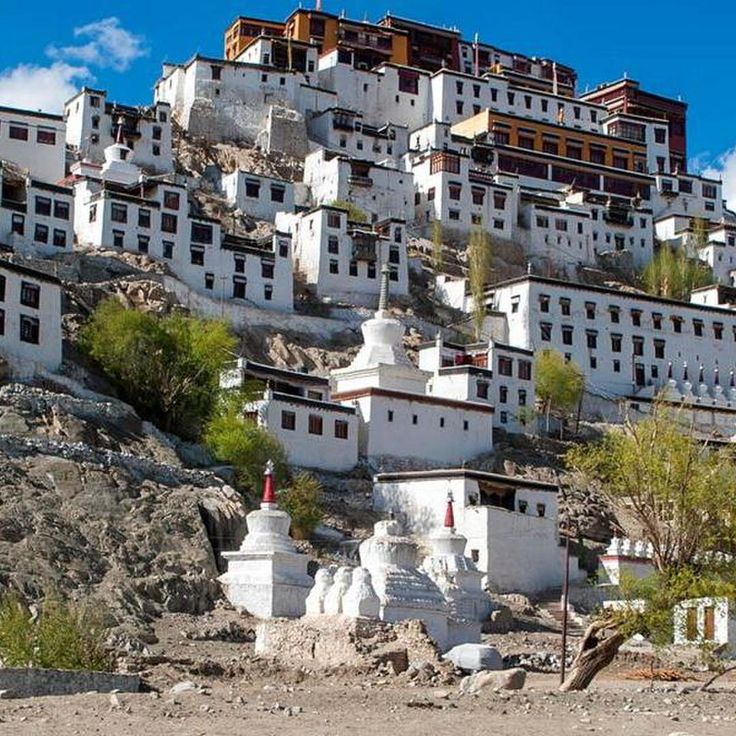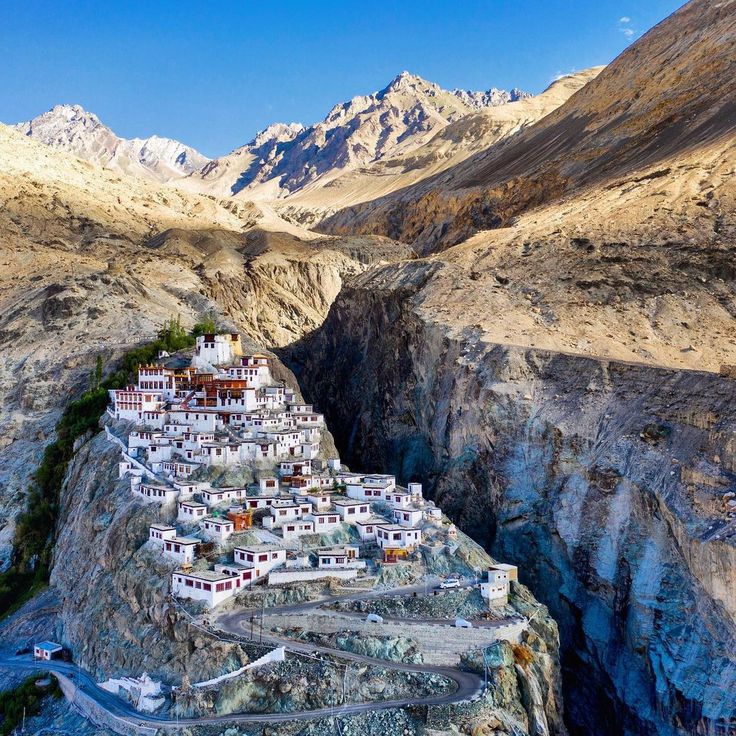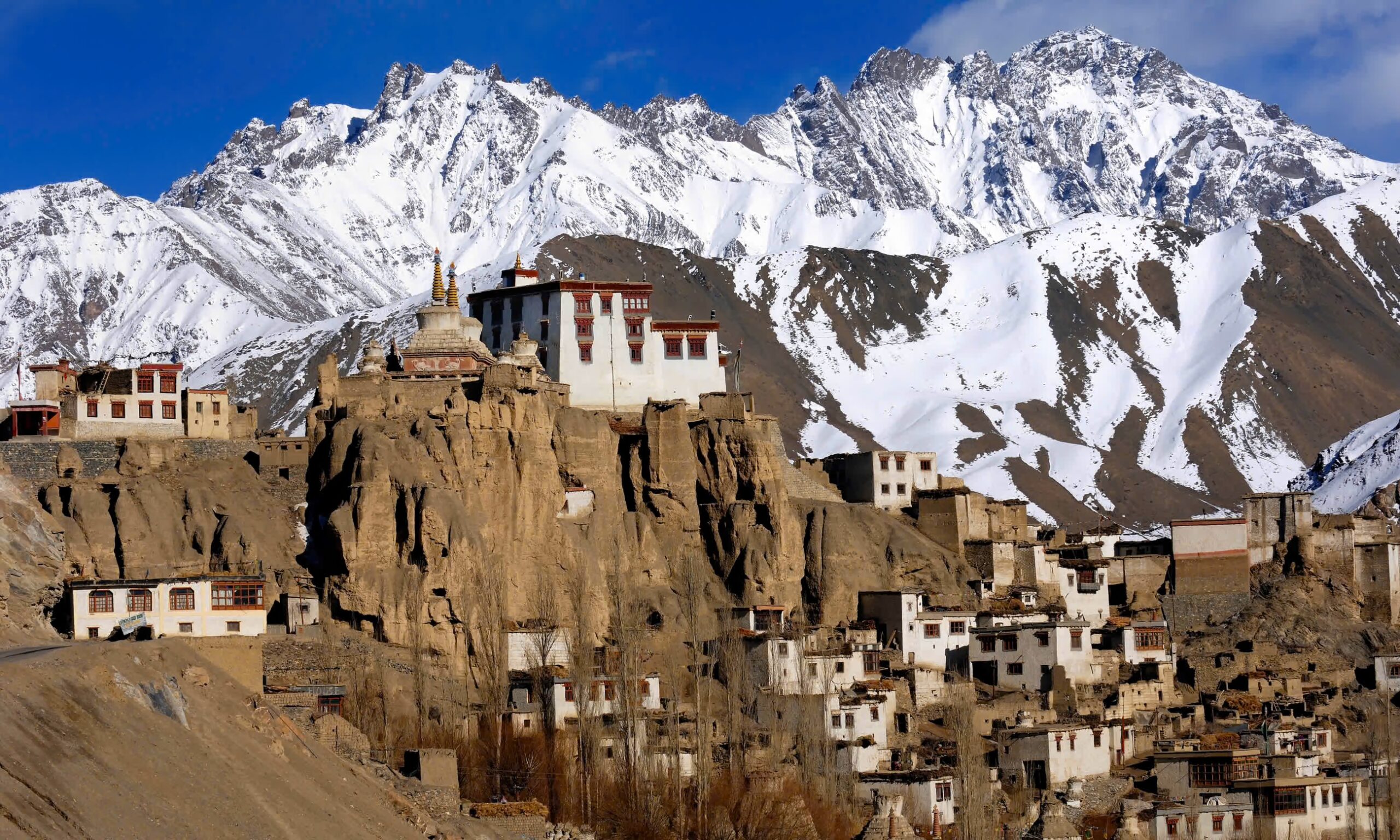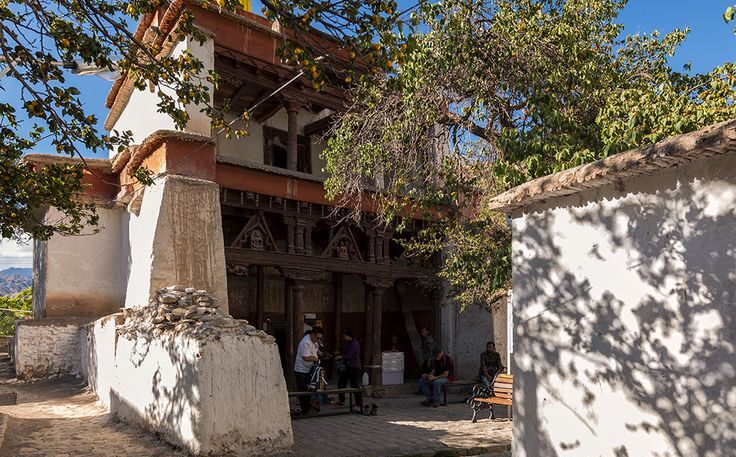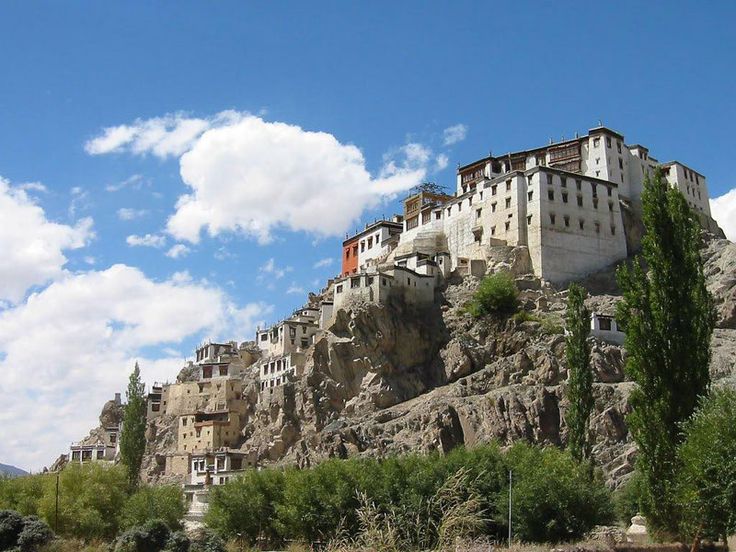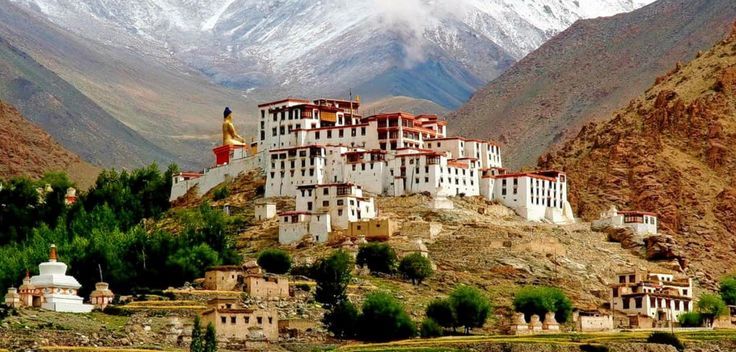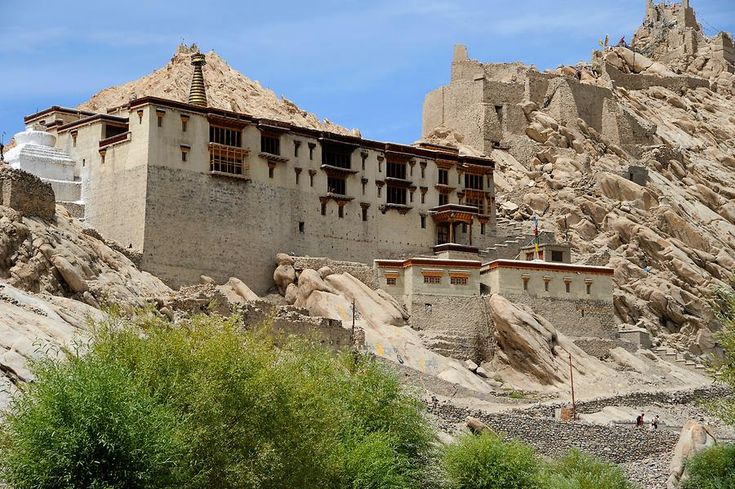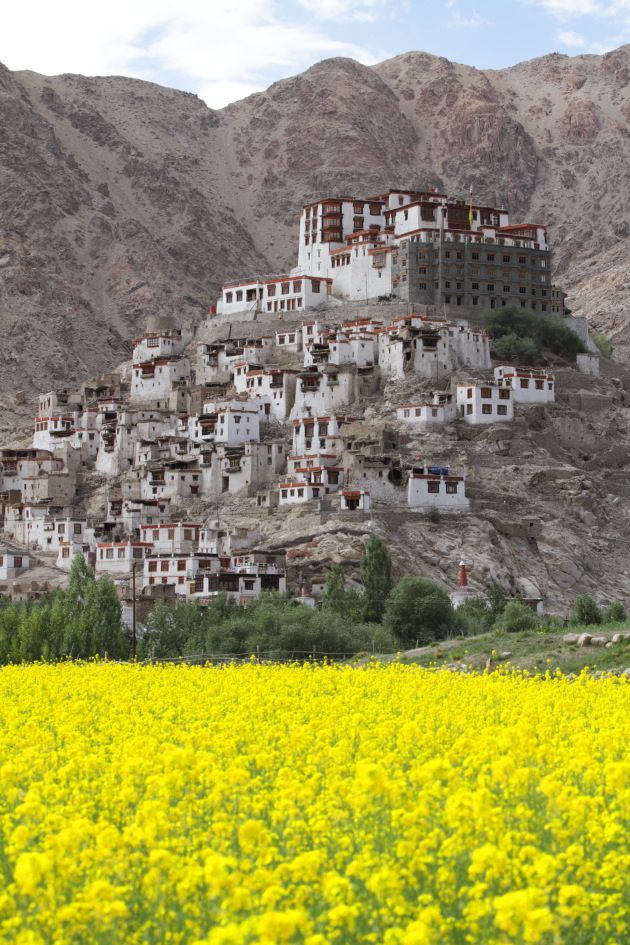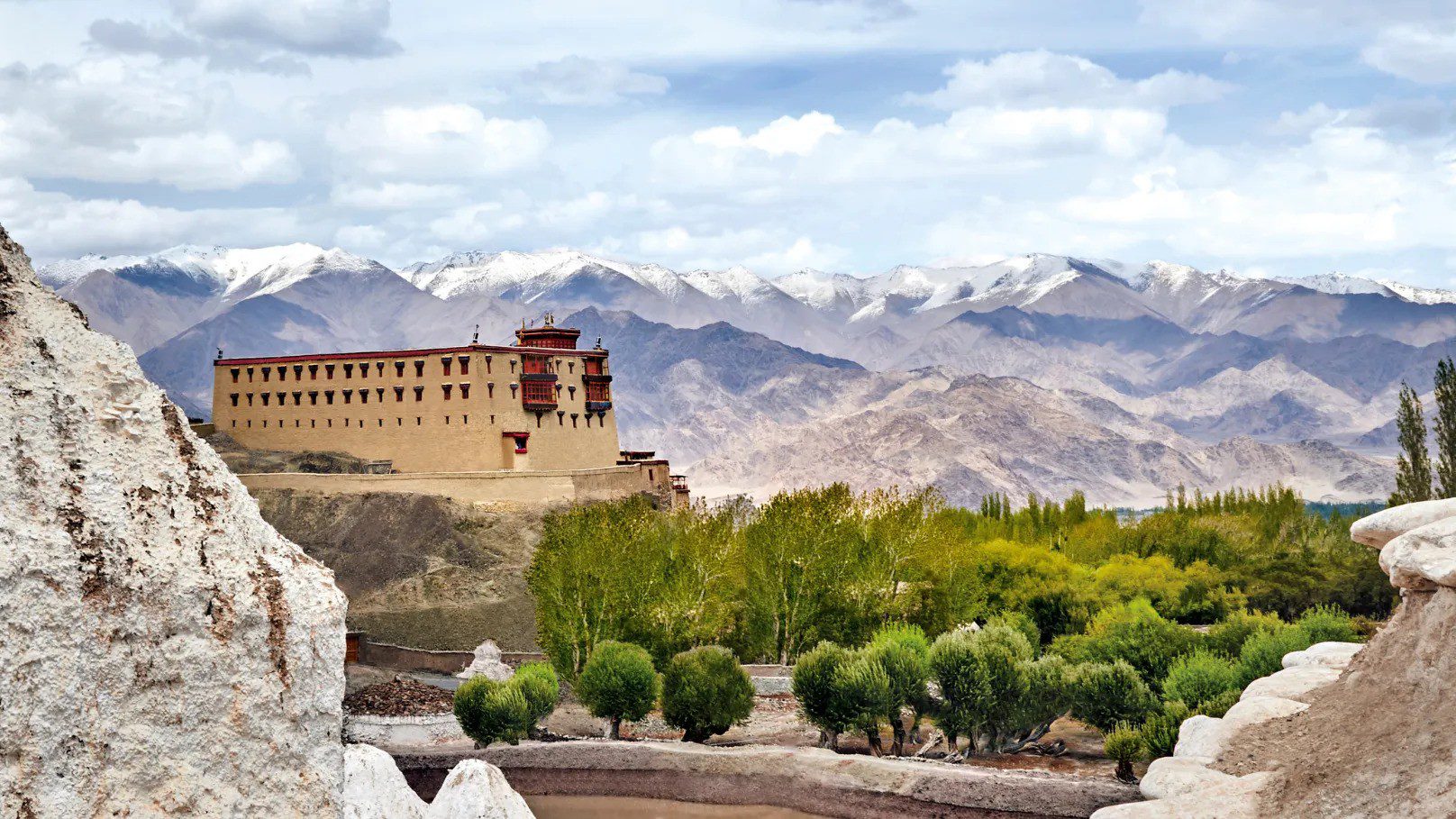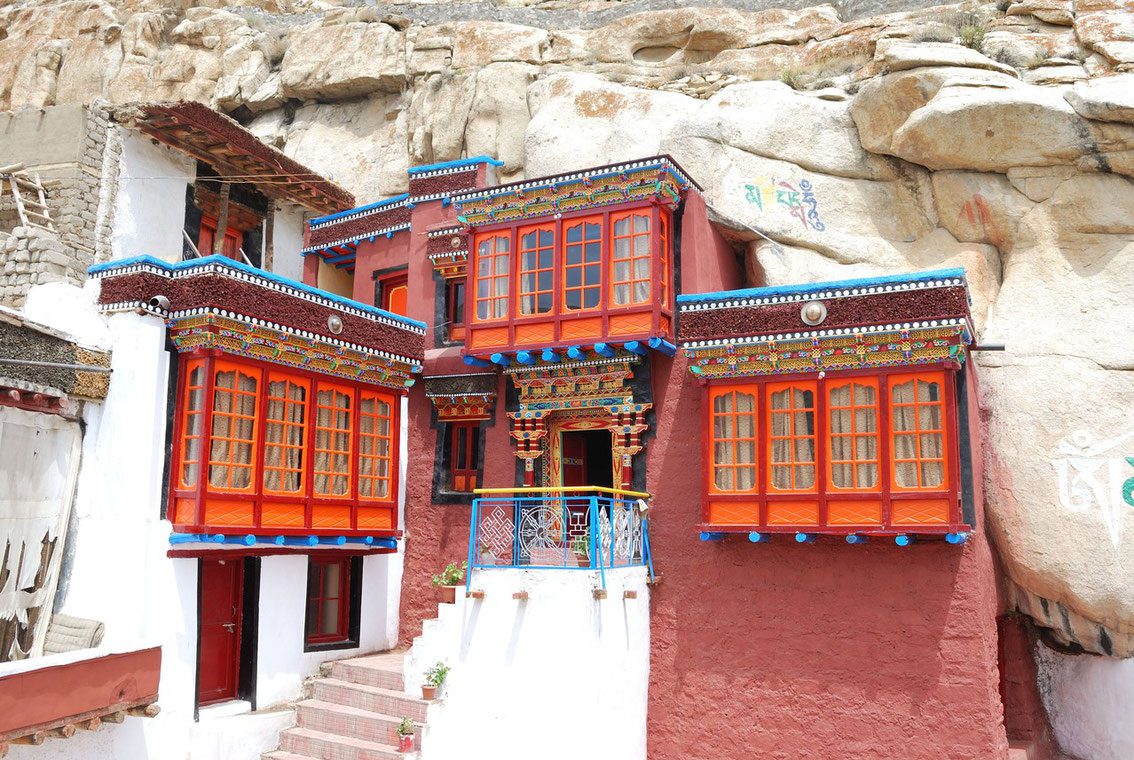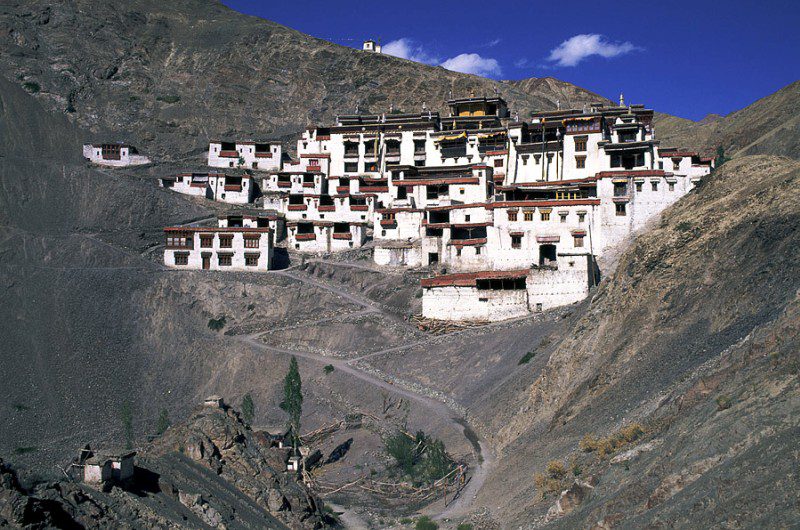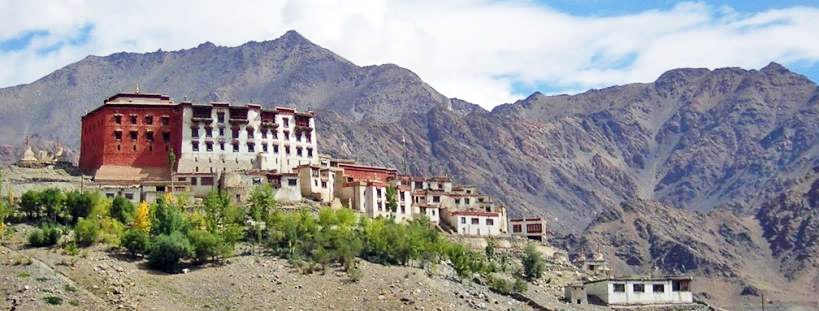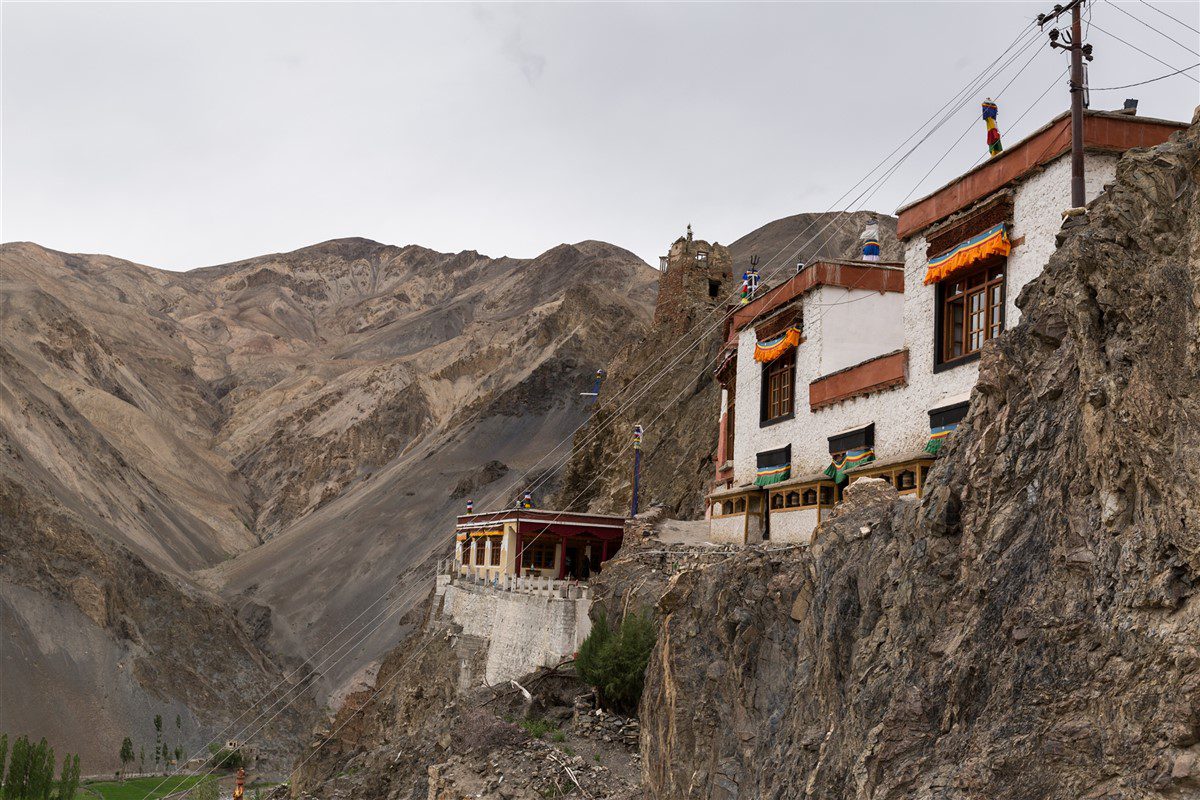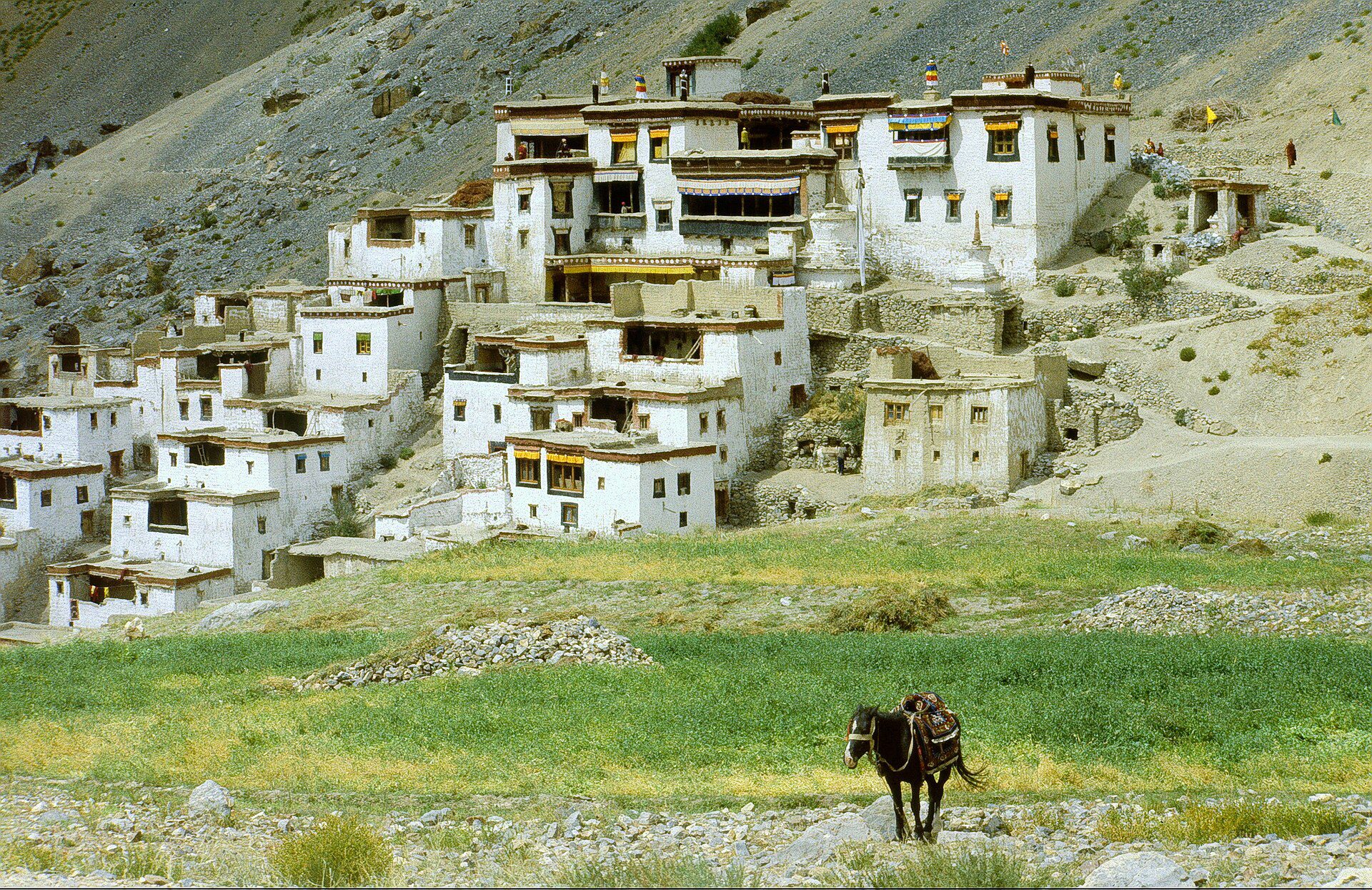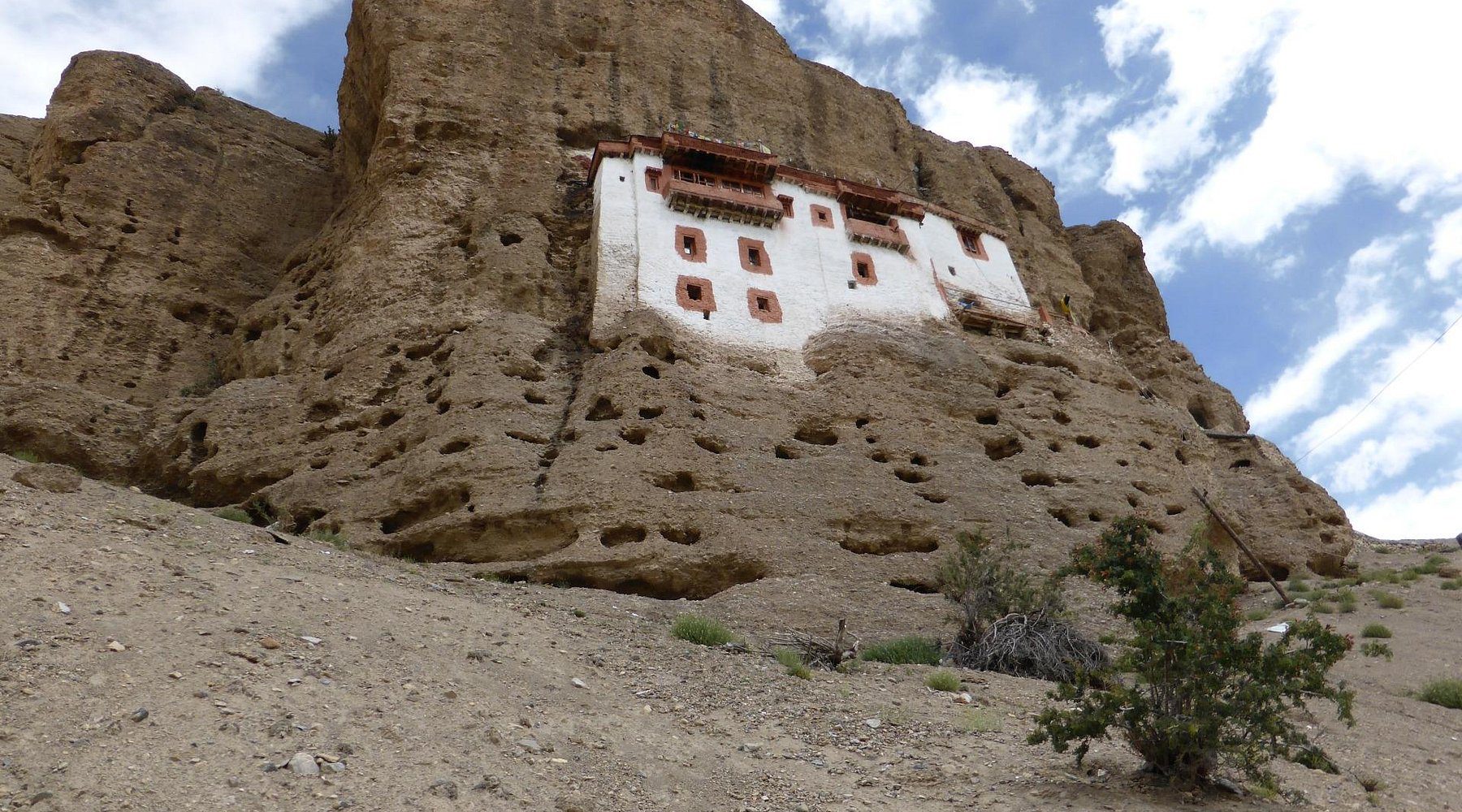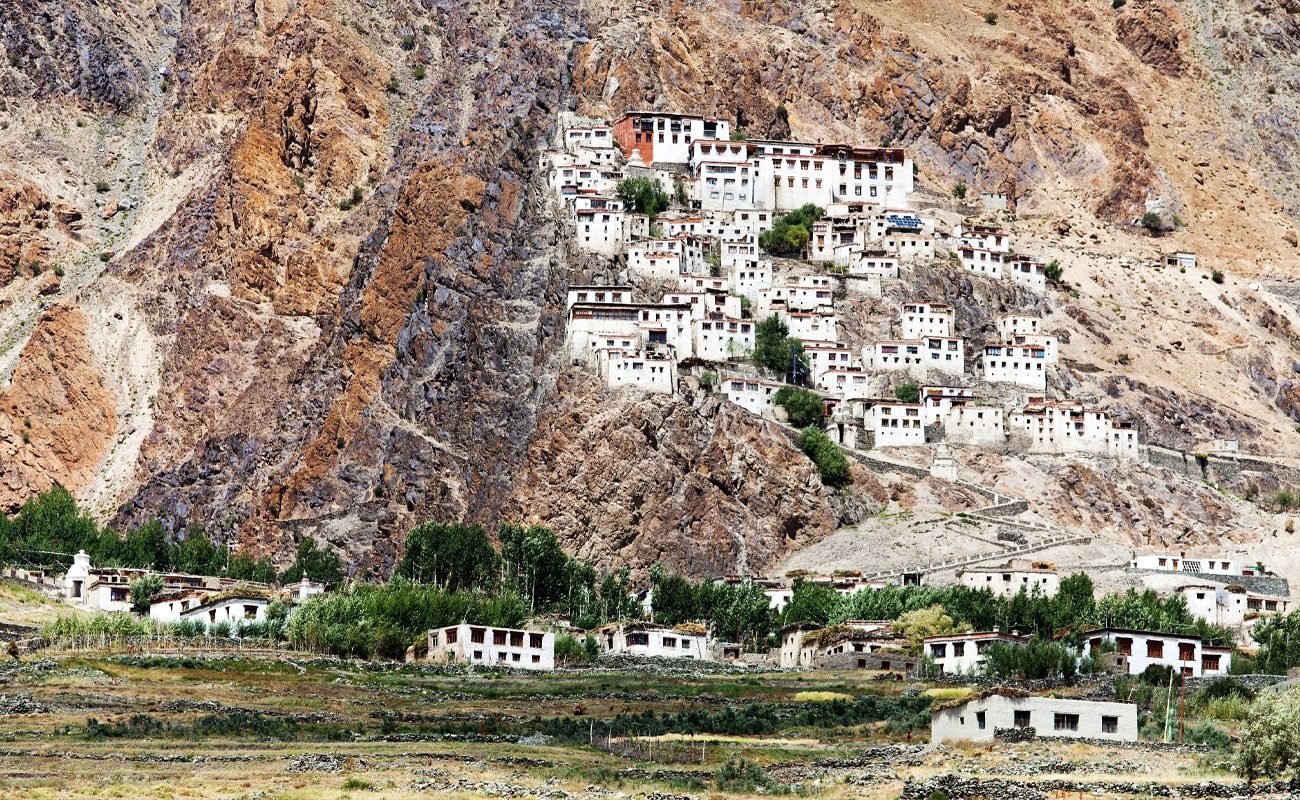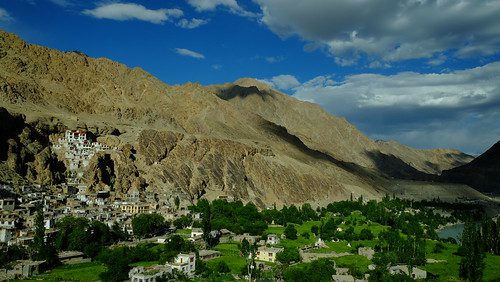Gompas in Ladakh: Exploring Ladakh’s Most Sacred Buddhist Monasteries
Ladakh, known as “the land of high passes,” is famous for its remote location, stunning landscapes, and, most importantly, its ancient Buddhist Gompas (monasteries). These Gompas are more than just religious sites; they serve as spiritual centers, historical landmarks, and cultural hubs. Visitors come to Ladakh’s Gompas not only to witness Tibetan Buddhist practices but also to experience serenity, stunning architecture, and breathtaking views of the Indian Himalayas.
In this post, we’ll explore the Top 20 must-visit Gompas in Ladakh, offering a detailed guide to each site. Whether you’re planning a spiritual retreat, a monastery trek, or simply wish to understand Ladakh’s rich Buddhist heritage, this guide will lead you to the most important and beautiful monasteries in the region.
Discover the Ancient and Spiritual World of Gompas in Ladakh
Top 20 Must-Visit Gompas in Ladakh
1. Hemis Monastery – The Largest and Most Famous Gompa in Ladakh

Hemis Monastery is the largest and most famous Gompa in Ladakh, known for the grand Hemis Festival, an annual event celebrating Tibetan Buddhism.
2. Thiksey Monastery – A Stunning Gompa with Panoramic Views

Thiksey Monastery is often compared to the Potala Palace in Tibet. The 12-story complex is famous for its large statue of Maitreya Buddha and breathtaking views.
3. Diskit Monastery – The Jewel of Nubra Valley

Diskit Monastery, the oldest and largest monastery in Nubra Valley, is well-known for its colossal Maitreya Buddha statue.
4. Lamayuru Monastery – The Moonland Monastery

One of the oldest Gompas in Ladakh, Lamayuru Monastery is surrounded by a surreal, moon-like landscape, adding to its mystical aura.
5. Alchi Monastery – An Artistic Marvel

Alchi Monastery is famed for its ancient artwork, particularly murals and wood carvings, and is one of the most visually stunning monasteries in Ladakh.
6. Phuktal Monastery – The Hidden Gem in Zanskar Valley

Phuktal Monastery is built into a cliffside in the remote Zanskar Valley, accessible only by trekking. Its isolation adds to its spiritual significance.
7. Spituk Monastery – A Blend of Tradition and Modernity

Spituk Monastery, located near Leh, is famous for its annual Gustor Festival and offers stunning views of the Indus River.
8. Likir Monastery – A Monastery of the Gelugpa Sect

Likir Monastery, one of the oldest in Ladakh, is known for its large outdoor statue of Maitreya Buddha and its connection to the Gelugpa sect.
9. Shey Monastery – The Former Royal Seat

Shey Monastery, near Leh, was once the residence of the Ladakhi royal family. It houses a massive gold-plated statue of Shakyamuni Buddha.
10. Stakna Monastery – The Tiger-Nosed Monastery

Perched on a hill resembling a tiger’s nose, Stakna Monastery provides stunning views of the surrounding valleys and the Indus River.
11. Matho Monastery – The Only Sakya Monastery in Ladakh

Matho Monastery, located 26 km southeast of Leh, is unique as the only Sakya sect monastery in Ladakh. It’s famous for its annual Oracle Festival.
12. Chemrey Monastery – A Hidden Gem with Rich Heritage

Chemrey Monastery is lesser-known but boasts beautiful murals and peaceful surroundings. It is a great spot for those seeking solitude.
13. Stok Monastery – Close to Stok Palace

Stok Monastery, located near Stok Palace, offers insight into Ladakhi culture and history. It houses a collection of rare manuscripts and paintings.
14. Takthok Monastery – The Cave Monastery

Takthok Monastery is unique because it’s built around a natural cave where Guru Padmasambhava is believed to have meditated. It is the only Nyingma sect monastery in Ladakh.
15. Rizong Monastery – Known for Meditation

Ridzong Monastery is famous for its strict discipline and emphasis on meditation. Located in a serene valley, it offers a tranquil environment for spiritual seekers.
16. Mangyu Monastery – A Hidden Artistic Treasure

Mangyu Monastery is one of Ladakh’s hidden gems, featuring ancient paintings that resemble the artwork of Alchi Monastery. It is rarely visited, making it a peaceful retreat.
17. Phyang Monastery – A Center for Buddhist Studies

Phyang Monastery, located 16 km from Leh, is known for its large collection of Buddhist artifacts and its role as a center for Buddhist studies.
18. Wanla Monastery – The Lesser-Known Alchi Companion

Wanla Monastery, often overlooked by travelers, is a hidden gem similar in style to Alchi. It is part of the same artistic tradition, with beautiful murals and a peaceful atmosphere.
19. Lingshed Monastery – Remote and Majestic

Lingshed Monastery is located in a remote region of Ladakh, accessible by trekking. It is one of the oldest in the area and offers stunning views of the surrounding mountains.
20. Shargole Monastery – Perched on a Cliff

Shargole Monastery is dramatically located on a cliff face. Its unique architecture and serene atmosphere make it one of Ladakh’s most visually striking monasteries.
Ladakh is home to numerous monasteries, each with its own unique history and architecture. Here are the top 20 Gompasyou should not miss on your trip.
| Gompa Name | Location | Key Features |
| Hemis Monastery | Near Leh | Largest in Ladakh, annual Hemis Festival |
| Thiksey Monastery | Near Leh | Panoramic views, Maitreya Buddha statue |
| Diskit Monastery | Nubra Valley | Colossal Buddha statue, oldest monastery in Nubra |
| Lamayuru Monastery | Lamayuru | Surreal “moonland” landscape, ancient heritage |
| Alchi Monastery | Alchi Village | Artistic murals, intricate wood carvings |
| Phuktal Monastery | Zanskar Valley | Remote, cliffside location, accessible via trekking |
| Spituk Monastery | Near Leh | Views of the Indus River, Gustor Festival |
| Likir Monastery | Likir Village | Large outdoor Maitreya statue, Gelugpa sect monastery |
| Shey Monastery | Near Leh | Former royal residence, gold-plated Buddha statue |
| Stakna Monastery | Stakna Hill | Tiger-nosed hill location, serene atmosphere |
| Matho Monastery | Near Leh | Only Sakya sect monastery in Ladakh, famous Oracle Festival |
| Chemrey Monastery | Chemrey | Lesser-known, peaceful atmosphere, stunning murals |
| Stok Monastery | Near Stok Palace | Close to Stok Palace, rich in manuscripts and paintings |
| Takthok Monastery | Takthok | Cave monastery, associated with Guru Padmasambhava |
| Ridzong Monastery | Ridzong Valley | Focus on meditation, secluded and tranquil setting |
| Mangyu Monastery | Mangyu Village | Artistic treasure similar to Alchi, rarely visited |
| Phyang Monastery | Phyang Village | Center for Buddhist studies, extensive artifact collection |
| Wanla Monastery | Wanla Village | Artistic traditions similar to Alchi, peaceful environment |
| Lingshed Monastery | Lingshed Village | Remote location, accessible via trek, beautiful mountain views |
| Shargole Monastery | Shargole Cliff | Dramatic cliffside location, unique architecture |
Why Visit Ladakh’s Gompas for a Spiritual Retreat
Ladakh’s Gompas provide a peaceful retreat from the bustling world, making them an ideal destination for spiritual seekers. The monastic life in these monasteries offers a unique opportunity for visitors to learn Tibetan Buddhism, meditate in sacred surroundings, and even stay in the monasteries for short retreats.
Experience the Peaceful Life of Monks in Ladakh’s Gompas
Visiting Ladakh’s Gompas provides an opportunity to witness monastic life and experience the peacefulness of Buddhist rituals. A stay at one of these monasteries offers tourists a unique chance to meditate, practice mindfulness, and gain insight into the spiritual traditions of Ladakh.
Many Ladakhi monasteries offer meditation retreats for those interested in mindfulness and self-reflection. Ridzong Monastery, known for its strict adherence to meditation, is a perfect place to experience the quietude that defines Buddhist practices in Ladakh.
Cultural Significance of Gompas in Ladakh’s Buddhism
Gompas in Ladakh play a vital role in preserving the region’s Buddhist heritage and traditions. These monasteries are not just religious centers but also hold significant cultural value, showcasing ancient Tibetan manuscripts, artifacts, and sacred rituals.
The Gompas in Ladakh hold significant cultural and spiritual value, serving as centers for the preservation of Buddhist texts, art, and teachings. For instance, Alchi Monastery is an ancient artistic marvel, featuring murals that date back over a millennium.
Reasons to Visit Ladakh’s Gompas
- Monastic life: Experience daily Buddhist rituals and monastic routines.
- Mindfulness retreats: Participate in meditation retreats in peaceful surroundings.
- Festivals: Attend vibrant festivals like the Hemis Festival at Hemis Monastery.
- Art and architecture: Marvel at ancient murals, wood carvings, and stunning Buddhist statues.
Best Time to Visit Ladakh’s Monasteries
Plan Your Ladakh Monastery Tour During Festival Seasons
To fully experience the cultural richness of Ladakh, consider planning your trip during Gompa festivals such as Hemis Festival or Thiksey Gustor. These festivals allow visitors to witness vibrant rituals, dance performances, and mask ceremonies, offering a deeper connection to the spiritual life in Ladakh.
he best time to visit Ladakh’s Gompas is during the summer months (May to September), when the weather is pleasant and the monasteries host vibrant festivals. The Hemis Festival in June-July is one of the most famous, attracting thousands of visitors to Hemis Monastery for two days of celebration, masked dances, and Buddhist rituals.
Other notable festivals include:
- Thiksey Gustor (Thiksey Monastery)
- Phyang Tsedup (Phyang Monastery)
- Matho Nagrang (Matho Monastery, featuring the famed oracle performances)
Seasonal Tips:
- Summer: Ideal for sightseeing and festival participation.
- Winter: While most of Ladakh remains snowbound, winter visits offer a more secluded and serene experience, particularly for those interested in the isolated beauty of remote Gompas like Phuktal Monastery.

How to Reach the Most Famous Gompas in Ladakh
Guide to Reaching Hemis Monastery from Leh
Hemis Monastery is easily accessible from Leh, located about 45 km away. Visitors can either hire a taxi or join a monastery tour to explore this sacred site, making it an essential stop on any Ladakh spiritual journey.
| Route | Distance | Time | Best Option |
| Leh to Hemis | 45 km | 1.5 hours | Taxi, self-drive |
| Leh to Thiksey | 19 km | 40 minutes | Taxi, self-drive |
| Leh to Diskit | 120 km | 4-5 hours | Taxi, tour bus |
| Leh to Lamayuru | 125 km | 4 hours | Taxi, bus |
For the more remote Gompas such as Phuktal or Lingshed, travelers must embark on a monastery trek. The Zanskar Valley trek leads to Phuktal Monastery, offering adventurers a combination of stunning landscapes and spiritual exploration.
A Complete Guide to Monastery Treks in Ladakh
Explore Ladakh’s Sacred Gompas on a Trekking Adventure
For adventure seekers, trekking routes in Ladakh offer an incredible way to discover remote and lesser-known Gompas, such as Phuktal Monastery. These monastery treks combine physical challenges with spiritual exploration, taking you through the majestic Himalayan landscape.
For those seeking a blend of spirituality and adventure, trekking to Ladakh’s Gompas is an unforgettable experience. Some of the most popular monastery treks include the Lamayuru to Alchi trek, which passes through remote villages and ancient monasteries like Wanla and Mangyu.
Popular Monastery Trek Itineraries for Spiritual Travelers
Combine adventure with spirituality by embarking on popular monastery trek itineraries such as the Lamayuru to Alchi trek or the Zanskar Valley trek. These treks allow you to explore ancient Gompas while immersing yourself in the natural beauty of the Trans-Himalayas.
| Trek Name | Monasteries Visited | Trek Duration |
| Lamayuru to Alchi Trek | Lamayuru, Wanla, Alchi | 5 days |
| Zanskar Valley Trek | Phuktal Monastery, Lingshed Monastery | 10-12 days |
| Markha Valley Trek | Hemis, Thiksey | 7 days |
These treks offer a rare opportunity to visit monasteries that are far removed from the more popular routes, allowing trekkers to immerse themselves in Ladakh’s spiritual and natural beauty.

Conclusion: Unlock the Mysteries of Ladakh’s Gompas
Start Your Spiritual Journey by Exploring Ladakh’s Monasteries
Whether you’re seeking a peaceful retreat or an adventurous trek, Ladakh’s Gompas offer a unique blend of spirituality, culture, and history. From the famous Hemis Monastery to the remote Phuktal Gompa, these sacred sites are a must-visit for anyone looking to connect with Tibetan Buddhism and the spiritual heart of the Himalayas.
Ladakh’s Gompas represent not only the spiritual heart of the Himalayas but also a doorway to the region’s rich history, art, and culture. Whether you visit Hemis Monastery during the Hemis Festival, trek to the remote Phuktal Monastery, or simply admire the architecture of Thiksey, each Gompa offers a unique experience.
Whether you’re on a spiritual journey, an adventurous trek, or a cultural exploration, these monasteries hold a special place in the heart of Ladakh. Plan your next trip to discover the sacred sites of this breathtaking region, and immerse yourself in the timeless traditions of Tibetan Buddhism.


